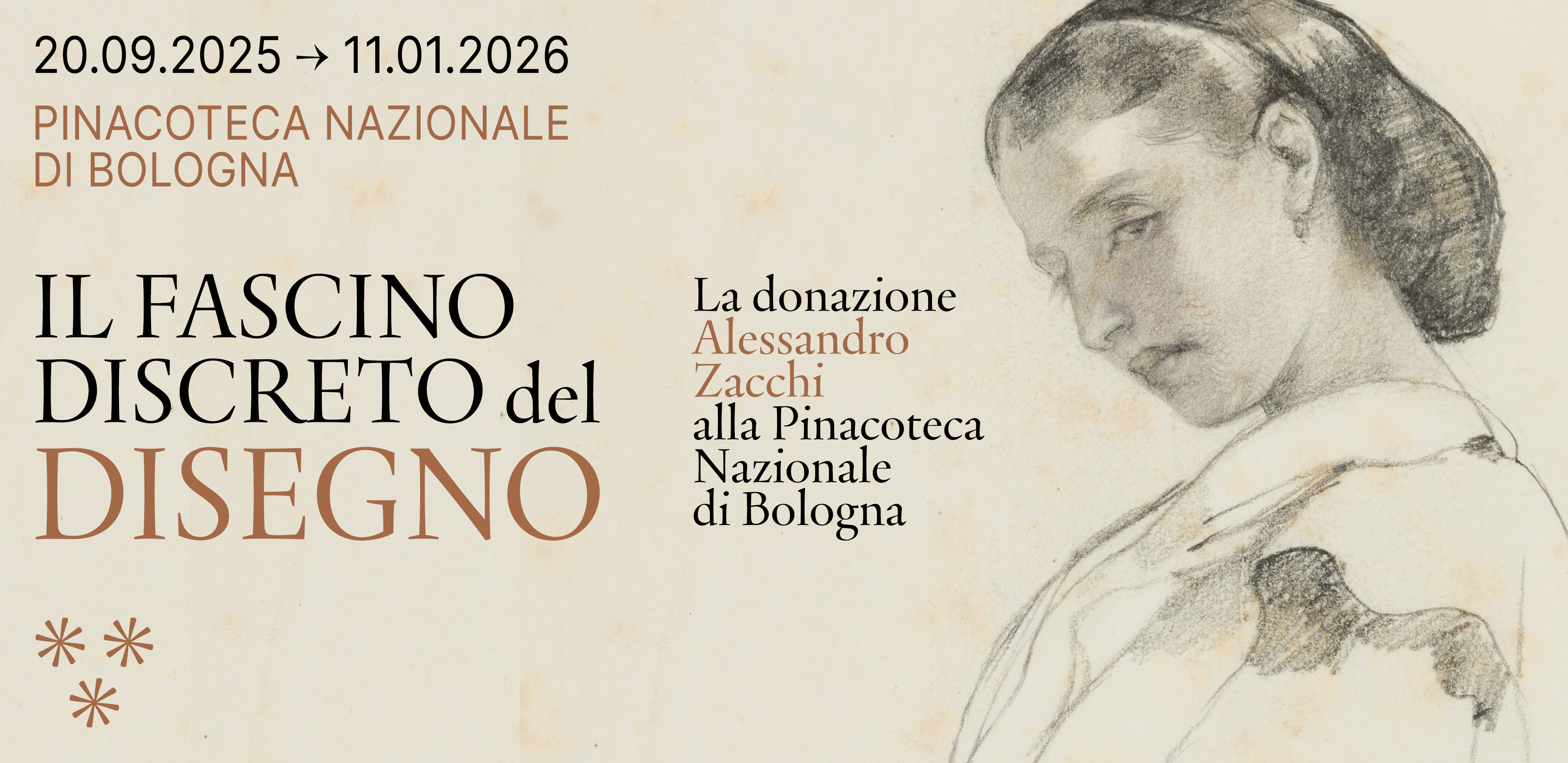
La Pinacoteca Nazionale di Bologna nasce nel 1808 come quadreria dell’Accademia di Belle Arti, l’istituto d’istruzione sorto dalle ceneri della settecentesca Accademia Clementina. L’antico nucleo, proveniente dall’Istituto delle Scienze, fu in seguito arricchito dalla straordinaria raccolta di quasi mille dipinti frutto delle soppressioni di chiese e conventi compiute dopo l’ingresso delle truppe napoleoniche a Bologna, tra il 1797 e il 1810, e nuovamente a seguito delle soppressioni del 1866 attuate dal nuovo stato italiano.
Nella sede distaccata di Palazzo Pepoli Campogrande è possibile ammirare le sale splendidamente affrescate dai principali protagonisti della grande decorazione bolognese tra la seconda metà del Seicento e gli inizi del secolo successivo: il Salone d’onore con la trionfale Apoteosi di Ercole di Canuti, la Sala di Felsina con le pitture composte e aggraziate dei fratelli Rolli, le sale delle Stagioni e dell’Olimpo, dove l’irriverente Giuseppe Maria Crespi contamina la decorazione celebrativa con i modi della pittura di genere, l’elegante classicismo della Sala di Alessandro di Donato Creti. Gli ambienti del piano nobile di Palazzo Pepoli Campogrande ospitano alle pareti alcuni dipinti della quadreria Zambeccari, la ricca collezione destinata alla pubblica fruizione a fine Settecento dal marchese Giacomo Zambeccari ed entrata a far parte delle raccolte della Pinacoteca nel 1884.
Avvisi ai visitatori
- Giovedì 27 novembre 2025 la Pinacoteca sarà chiusa al pubblico dalle ore 12:30 alle ore 14:30 per Assemblea sindacale. I visitatori presenti all'interno del museo durante la mattina dovranno recarsi fuori entro le 12:15 e potranno rientrare alla riapertura del museo alle 14:30. Ci scusiamo per i possibili disagi.
- Dall’1 luglio 2024 Palazzo Pepoli Campogrande è chiuso al pubblico per lavori di ristrutturazione e adeguamento tipologico funzionale. La riapertura è prevista per la primavera 2026.
Notices to visitors
- On Thursday, November 27, 2025 from 12:30 PM to 2:30 PM, the Pinacoteca will be closed to the public for a union meeting. All visitors are requested to leave the museum by 12:15 PM and may return when we reopen at 2:30 PM. We apologize for the inconvenience.
- As of 1 July 2024 Palazzo Pepoli Campogrande is closed to the public for renovation and function-related upgrading. It is scheduled to reopen in spring of 2026.



As of 1 July 2024 Palazzo Pepoli Campogrande is closed to the public for renovation and function-related upgrading. It is scheduled to reopen in spring of 2026.
Palazzo Pepoli-Campogrande is the satellite-seat of the Pinacoteca Nazionale, and is known even under the name of "Palazzo Pepoli Nuovo” (New), to differentiate it from the "Old" Palace, i.e. the XIVth century Home of the Pepoli family, just on the opposite side of the road. Built from the second half of the XVIIth century on behalf of Odoardo Pepoli, the new palace was intended as a modern and rich residence, appropriate to represent the social role of the family that, starting as textile merchants, and then money-changers and bankers, have become one of the most richest and important family of Bologna .
The building of the Palace began with the monumental staircase, large and elegant, conceived as a perfect set design for the elaborate ceremonial of the Baroque aristocratic society, that connects directly the entrance with the main floor. On tha vault, framed by rich stucco decoration, can be seen two oval frescoes by Domenico Maria Canuti (1665), depicting Taddeo Pepoli named Lord of Bologna and Taddeo Pepoli confirmed as vicar apostolic by the Pope.
The main floor, donated by Edvige Campogrande to the Bologna Municipality, and now managed by the Polo Museale dell’Emilia Romagna, houses a series of wonderful rooms frescoed by the main protagonits of the Bologna decoration painting, from the hal of the XVIIth century up to the beginning of the next century. Starting from the Main Hall with the triumphant Hercules' Apotheosis by Canuti, to the Felsina Room, with the gracious and well composed figures made by the Rolli brothers; from the Seasons and the Olympus rooms, where the playful Giuseppe Maria Crespi mixes up the the celebratory decoration with the genre painting ways, up to the elegant classicism of the Alexander Room by Donato Creti.
The spaces of the main floor house some of the paintings of the Zambeccari Collection, the rich collection donated at the end of the XVIII century by the Marquess Giacomo Zambeccari which enterd in the Pinacoteca collections in 1884.
For infomation and opening times.










